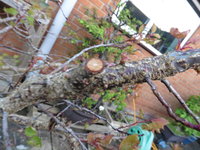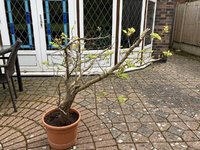ElyDave
Yamadori
So, crossing branches, an absolute no-no, or are they?
We are all generally told, no crossing or inward pointing branches. But are there any circumstances in which crossing branches are permissable?
Dip into the fruiting forum for more info tomorrow.
We are all generally told, no crossing or inward pointing branches. But are there any circumstances in which crossing branches are permissable?
Dip into the fruiting forum for more info tomorrow.







